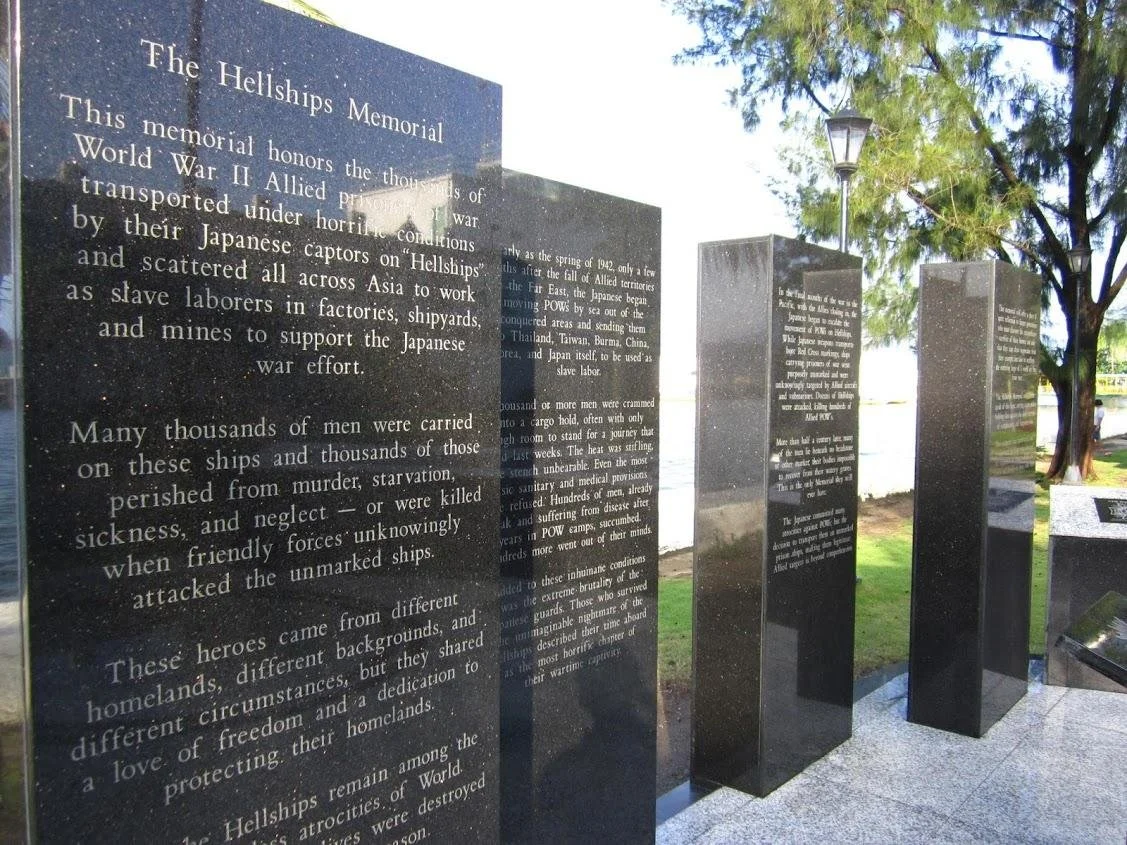Monument Text
(1st block from left)
This memorial honors the thousands of World War II Allied prisoners of war transported under horrific conditions by their Japanese captors on "Hellships" and scattered all across Asia to work as slave laborers in factories, shipyards, and mines to support the Japanese war effort.
Many thousands of men were carried on these ships and thousands of those perished from murder, starvation, sickness, and neglect - or were killed when friendly forces unknowingly attacked the unmarked ships.
These heroes came from different homelands, different backgrounds, and different circumstances, but they shared a love of freedom and a dedication to protecting their homelands.
Truly, the Hellships remain among the most senseless atrocities of World War II, as so many lives were destroyed for no purpose or reason.
------------------------------------------
(2nd block)
As early as the spring of 1942, only a few months after the fall of Allied territories in the Far East, the Japanese began moving POWs by sea out of the conquered areas and sending them to Thailand, Taiwan, Burma, China, Korea, and Japan itself, to be used as slave labor.
A thousand or more men were crammed into a cargo hold, often with only enough room to stand for a journey that could last weeks. The heat was stifling, the stench unbearable. Even the most basic sanitary and medical provisions were refused. Hundreds of men, already weak and suffering from disease after years in POW camps, succumbed. Hundreds more went out of their minds
Added to these inhumane conditions was the extreme brutality of the Japanese guards. Those who survived the unimaginable nightmare of the Hellships describe their time aboard as the most horrific chapter of their wartime captivity.
-------------------------------------------
(3rd block)
In the final months of the war in the Pacific, with the Allies closing in, the Japanese began to escalate the movement of POWs on Hellships. While Japanese weapons transports bore Red Cross markings, ships carrying prisoners of war went purposely unmarked and were unknowingly targeted by Allied aircraft and submarines. Dozens of Hellships were attacked, killing hundreds of Allied POWs.
More than half a century later, many of the men lie beneath no headstone or other marker, their bodies impossible to recover from their watery graves. This is the only Memorial they will ever have.
The Japanese committed many atrocities against POWs; but the decision to transport them on unmarked prison ships, making them legitimate Allied targets is beyond comprehension.
------------------------------------------
(4th block)
This memorial will offer a place of quiet reflection to future generations who must discover the extraordinary sacrifice of these heroes, not only that they may draw inspiration from their example but also to reaffirm the enduring hope of a world set free from war.
The Hellships Memorial will forever speak of this hope, serving as an anchor holding fast against the slow currents of complacency and forgotten loss.
This memorial was established and is supported by former prisoners of war of the Japanese, family and friends of those who died, and those who survived the endless nightmare of being a POW.
